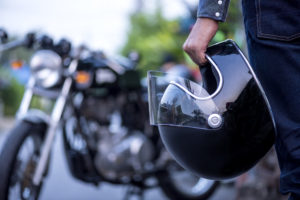It is pretty common knowledge that carbon monoxide, often referred to as "the silent killer," can cause illness and death in concentrated amounts. Wikipedia describes the science of carbon monoxide toxicity as follows:
Carbon monoxide poisoning is the most common type of fatal poisoning in many countries. Carbon monoxide is colorless and odorless, but extremely toxic: it combines with hemoglobin in the blood to produce carboxyhemoglobin (HbCO), which is ineffective for delivering oxygen to the body tissues (a condition known as anoxemia). Concentrations as low as 667 ppm can cause up to 50% of the body’s hemoglobin to convert to HbCO. In the United States, OSHA limits long-term workplace exposure levels to 50 ppm.
The most common symptoms of CO poisoning can resemble the flu, including headache, nausea and vomiting, dizziness, lethargy and a feeling of weakness. Infants may be irritable and feed poorly. Neurological signs include confusion, disorientation, visual disturbance, syncope and seizures.
In his pioneering 1846 study, Claude Bernard observed that that the blood of poisoned dogs was more rutilant ("gleaming" or "glowing") in all the vessels, a fact now known to be due to the formation of HbCO. Some classic descriptions of CO poisoning cite also retinal hemorrhages, bright reddish skin, and an abnormal "cherry-red" blood hue; but in most clinical diagnoses these signs are seldom seen.
Carbon monoxide is believed to compromise other important molecules such as myoglobin, and mitochondrial cytochromeoxidase. Exposures can lead to significant damage to the heart and central nervous system, especially to the globuspallidus, often with long-term sequela. Carbon monoxide can also have severe effects on the fetus of a pregnant woman.
Wikipedia also describes how carbon monoxide is produced:
Carbon monoxide is produced from the partial oxidation of carbon-containing compounds; it forms in preference to the more usual carbon dioxide (CO2) when there is a reduced availability of oxygen, such as when operating a stove or an internal combustion engine in an enclosed space. Carbon monoxide has significant fuel value, burning in air with a characteristic blue flame, producing carbon dioxide. Despite its serious toxicity, it was once widely used (as the main component of coal gas) for domestic lighting, cooking and heating, and in the production of nickel. Carbon monoxide still plays a major role in modern technology, in industrial processes such as iron smelting and as a precursor to myriad products.
When it comes to boating, however, many are unaware of the dangers posed by internal combustion engines and other carbon monoxide producing sources associated with boats and boating activities. Since 2000, there have been more than 600 boating related poisonings in 35 states and of those, more than 100 have resulted in death. But boating caused carbon monoxide poisonings are 100 percent preventable if armed with the right knowledge
The Centers for Disease Control’s National Institute for Occupational Safety and Health has developed the following fact sheet:
Facts You Should Know about CO
- CO cannot be seen or smelled, but it can kill you or make you sick.
- Know the symptoms of CO poisoning:
Headache
Confusion
Fatigue
Seizures
Dizziness Loss of consciousness
NauseaGet to fresh air and seek medical help immediately if you or a family member has these symptoms!
- Install and test daily a battery operated CO detector.
- CO from engine exhaust builds up inside and outside the boat in areas near exhaust vents. Stay away and do not swim near these areas while propulsion engines or generator are running.
- Schedule regular engine and exhaust system maintenance inspections by experienced and trained technicians.
- Be aware that dangerous concentrations of CO can accumulate within seconds.
- All CO poisonings are preventable!
The U.S. Coast Guard also has a wealth of updated information on its website:
Carbon Monoxide – Status Update
CO Detector Update:
The Coast Guard has conducted an investigation to determine what carbon monoxide (CO) detection devices are available to recreational boaters, such that, when installed and activated could reduce the risk of being exposed to high levels of CO -THAT SILENT KILLER. A variety of technologies is available for detecting the presence of CO on boats and should be considered by recreational boaters to reduce their risk of injury or death while boating.
Teak Surfing Update:
Teak surfing (a.k.a. platform dragging or bodysurfing) is associated with carbon monoxide poisoning from the boat’s exhaust whereby participants can be overcome by exhaust fumes and go unconscious which could lead to drowning.
California – On January 1, 2005, California was the first state to outlaw “Teak Surfing.” The Anthony Farr and Stacey Beckett Boating Safety Act of 2004, (AB 2222), was signed into law by Governor Schwarzenegger and imposes a fine of up to $100 on anyone who operates a vessel’s engine or generator while a person is holding on to the swim platform, swim ladder, or swim step on a boat. The law provides exceptions for briefly assisting with the docking or departure, exiting or entering the vessel, or engaging in law enforcement or emergency rescue activity.
Oregon – The 2005 legislature passed Senate Bill 56 making teak surfing (a.k.a. platform dragging) illegal beginning in 2006.
State of Washington – On March 20, 2006, the State of Washington enacted the “Jenda Jones and Denise Colbert safe boating act” (Senate Bill 6364). This legislation went into effect on January 1, 2007 and outlawed teak surfing, platform dragging, or bodysurfing behind a motor boat.
NASBLA – On September 21, 2005, the National Association of State Boating Law Administrators (NASBLA) approved the current version of the NASBLA Model Act for Safe Practices for Boat-Towed Watersports.
Background: This act was originally adopted by NASBLA on Oct. 29, 2003. However, the original act had a provision prohibiting the use of a tow rope of 20 feet or less, which would have precluded the popular sport of wake surfing. In response, during 2004, the NASBLA Committees on Law Enforcement and Boats and Associated Equipment revised the language and narrowed the act to apply to teak surfing (platform dragging) and body surfing – water sports that pose potential dangers to the participant both because of proximity to the boat’s propeller and because of the possibility of carbon monoxide poisoning. The amended act was approved by the NASBLA membership on Sept. 15, 2004. Then in 2005, those committees reviewed, approved and recommended to the NASBLA membership the current version as part of the Association’s Model Act Review and Standardization Project. The act was approved in revised form by the membership on Sept. 21, 2005.
Nevada & Pennsylvania – Using similar language as contained in the NASBLA model act, “Teak Surfing” has been banned through boating regulations in Nevada, and Pennsylvania.
Generator Set Update :
There are currently two manufacturers producing low carbon monoxide (CO) emission generator sets: Westerbeke and Kohler. The National Institute for Occupational Safety and Health (NIOSH) has tested both manufacturers’ generator sets at Lake Mead. With the cooperation of Forever Resorts, the U.S. Coast Guard arranged for NIOSH to test these manufacturers’ generator sets following installation on houseboats in Forever Resort’s rental fleet. As noted below, NIOSH did confirm the manufacturers’ claims of low CO emission.
Westerbeke “Safe-CO™” series generators slash carbon monoxide emissions by more than 99% to greatly improve boating safety and reduce pollution. Westerbeke has employed patented, innovative engineering, in combination with electronic fuel injection, to achieve dramatic reductions in carbon monoxide emissions. In March 2005, NIOSH successfully tested Westerbeke’s new low emission generator and confirmed their claims of low CO emission. In November 2006, NIOSH returned to test the Westerbeke generators after two full seasons of rental use. Test results indicate similar findings with the March 2005 test results. These tests were for a 14 KW generator with 4,656 hours (plugs changed at 2000 hours) and a 20 KW generator with 2836 hours. During the test of the 14 KW generator NIOSH evaluated the old catalyst and then replaced it and evaluated the generator with a new catalyst.
Kohler Power Systems has developed a new line of marine generator sets that the company claims reduces carbon monoxide emissions by as much as 99%. The new low-CO generator sets, models 5ECD and 7.3ECD, are the result of Kohler adapting new and innovative technologies to its products. The Kohler low-CO generator sets are each powered by a two-cylinder engine incorporating Kohler-designed intakes, fuel mixing manifolds and exhaust systems, and the carburetor has been replaced by a computer-controlled electronic fuel injection system that reduces carbon monoxide emission. In September 2007, NIOSH successfully tested Kohler’s new low emission generator and confirmed their claims of low CO emission.
Propulsion Engine Update:
Currently Indmar Products Company is the first manufacturer of a propulsion engine with catalytic technology resulting in low CO emissions. In December of 2006 NIOSH successfully tested Indmar’s new low emission propulsion engine and confirmed their claims of a reduction of CO emission (measured directly into the exhaust opening) of 92%.
Starting in 2008, California Environmental Protection Agency (Air Resources Board) has new certification requirements for inboard and sterndrive boat regulations.
Final Regulation Order – Inboard and Sterndrive Boat Regulations.
Ammendments to Inboard and Sterndrive Boat Regulations.
Hand-Held Shower Update:
On August 30, 2007 the Coast Guard issued an advisory to recreational boaters on carbon monoxide hazards caused by using a shower on a boat at the swim platform when the boat’s engine or generator set is running. The Coast Guard advised owners and operators of boats not to use hand-held showers at or near the swim platform if either the gasoline-powered propulsion engine(s) and/or generator set are in use. The Coast Guard further advises that the owner should never connect a hand-held shower system to the engine’s raw water open cooling system. The Coast Guard is concerned about the serious health risk from carbon monoxide poisoning and seeks to prevent loss of life and personal injury.
National Case Listing of CO Poisoning April 2007 Update:
The Double Angel Foundation, a non-profit corporation, in addition to working to increase awareness of the dangers that carbon monoxide poses to recreational boats; has continued to update the National Case Listing of CO Poisonings. The National Case Listing was originally developed at the request of the U.S. Coast Guard, through an interagency team comprised of representatives of the National Park Service, the US Department of Interior, and the National Institute for Occupational Safety and Health. This interagency team investigated boat-related CO poisoning and compiled a listing of CO Poisonings occurring across the United States. The last interagency update of the listing was dated October 2004. Since that time the Double Angel Foundation has updated this listing and posted the update on their website at doubleangel.org.
NIOSH Test Reports:
NIOSH has esAmendmentstablished a Topic Page website which includes a compilation of NIOSH Health Hazards Evaluations (HHE), NIOSH Engineering Reports and other resources.
NASBLA Recommended Model Acts:
For the model act language that NASBLA wishes for states to pass into law, see nasbla.org.
Finally, if you want to get involved in education and outreach on this or any other recreational boating issue, consider membership in an organization like the National Safe Boating Council.
Note: internal links in quotes were removed because of technical issues, but all links can be accessed through the source websites.

Bret Hanna of Wrona DuBois in Utah, focuses exclusively on litigating plaintiffs’ medical malpractice and catastrophic personal injury cases. He has represented clients in state and federal courts, in mediations, and in administrative proceedings in Michigan and Utah since 1991.










One Comment
SafeBoater
Boaters and anglers it is extremely important to be cautious of this “silent killer.” These are good tips to remember when you’re out on the water. To learn more about the dangers of carbon monoxide visit http://www.dbw.ca.gov.
Comments for this article are closed.